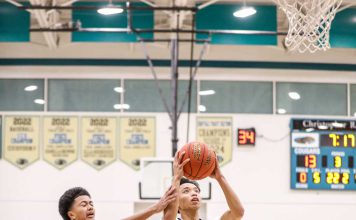Like many parents across America, I watched the struggles of students, parents and teachers as the Covid-19 lockdown forced schools to adapt and find new ways of keeping their students engaged and on track. I saw the results of that evolution as well: social isolation, depression, stress, disengagement, as well as massive teacher burnout as educators struggled with inadequate technology under mounting pressure to produce results. For years, districts and their special interests told anyone who would listen that they could do online learning better and cheaper than charter schools.
When that moment came during pandemic lockdowns, students, parents and policymakers learned the truth: School districts weren’t ready at all. Whether it was districts in Pennsylvania, Nevada, Texas, Missouri or California, they simply weren’t prepared.
And our children suffered. Some students haven’t seen the inside of a classroom since March 2020, but districts want you to trust that they’ll be ready in the fall. In the meantime, public education special interests and their elected friends have started movements to cut down on the number of virtual charter schools for succeeding where they failed.
Why? Why are we not turning to the online charter schools that have been shown to be so successful? These schools worked. And California’s online options are already limited. As the Delta variant spreads, it’s time to acknowledge it could potentially lead to future lockdowns or limited in-school instruction. Will school districts continue to stand in the way of virtuals, choosing their own interests over the children and a family’s right to choose the best school for their needs?
A new study, “Online learning: How do brick-and-mortar schools stack up to virtual schools?” underscores the need for leveling the playing field so families have ample and unfettered access to full-time virtual charter schools. Its author, Ian Kingsbury, was surprised to find just how much virtuals outperformed districts. In fact, he found the difference “jarring.”
Kingsbury concluded that parents/guardians were almost 6.5 times more likely to report that their child “learned a lot” in the spring of 2020 at a full-time virtual school. Surveys indicate that, “virtual schools dramatically outperformed brick-and-mortar schools when it comes to promoting active learning, communicating effectively, managing a classroom and providing high-quality instruction.” In fact, more than three-quarters of fully virtual parents agreed their child’s teachers employed instructional practices that were conducive to learning online, while families using emergency remote learning were either neutral or disagreed with that statement. There were similar results when parents were asked if their child’s teachers taught new material rather than reviewing old material.
As a national organization of parents who value the ability to choose the schools that are best for our children, we cannot be more thankful for how full-time virtual charter schools served our children in our states. School districts and their special interests have been exposed. We now have the evidence. The time has come for local, state and federal lawmakers to remember what happened last year and prepare to defend virtual charters so they can be ready to help more children if in-person learning is once again suspended.
As Kingsbury so rightly concluded, “…in the interest of student learning, states should seek to expand access to established virtual schools through the course of pandemic-related school closures.”
This is the opposite of what California is doing. Democrats have supported restricting virtual charter school funding and enrollment. Preserving online learning options is critical because online charter schools worked when we needed them most.
It’s time for California lawmakers to learn some recent state history.
Dr. Nicole Conragan, a Morgan Hill resident, is a practicing chiropractor. She is a board member of the National Coalition of Public School Options and former president of the California Parents for Public Virtual Education. For information, visit publicschooloptions.org.














